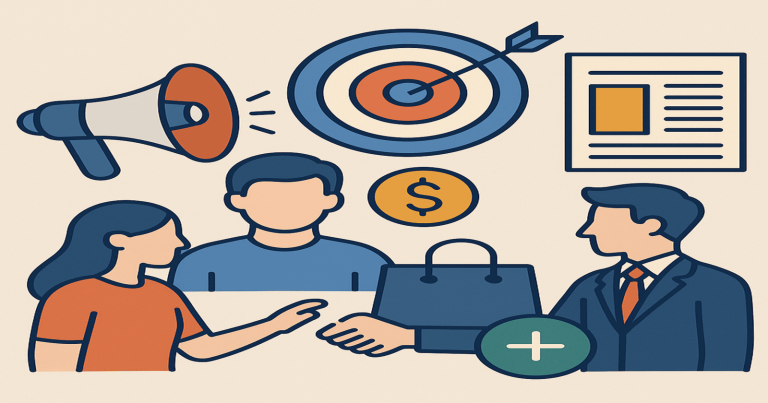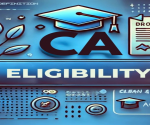Promotion refers to the activities a business uses to spread awareness, create interest, and influence the buying decisions of potential customers. These efforts aim to inform, persuade, and remind people about the value a product or service offers. Promotion is a fundamental part of the marketing mix and plays a direct role in achieving sales targets, expanding customer base, and building long-term brand value.It helps brands become visible in competitive markets. Promotion helps people identify products and understand why they should consider purchasing them over others. It connects businesses with their target groups by using communication tools that match their habits, needs, and lifestyles. Without promotion, even the best products may go unnoticed. It is not a one-time activity, but a continuous process that needs planning, resources, and the right timing. From offering discounts to running digital ads, every method of promotion plays a strategic role in business performance. Whether a product is new or well-established, promotion keeps it active in the minds of consumers. It also supports other parts of the business like distribution, branding, and customer retention. Promotion creates demand, boosts revenue, and enables business growth in every sector.
What is Promotion?
Promotion means all activities used to communicate product information and value to people to drive action. It focuses on attracting attention, building interest, and influencing behavior. Promotion connects businesses with their markets using consistent and goal-driven messages. It includes tools such as advertising, public relations, direct communication, and discount schemes.
A product may be useful and affordable, but if people do not know about it, they will not buy it. Promotion helps in filling this gap. It bridges the space between the company and the buyer. It can be done through print media, television, online channels, or personal communication. Promotion allows companies to make their product stand out and be remembered among many similar options available in the market.
Promotion is about communication that aims to trigger a customer response. It is built on the foundation of understanding customer behavior and delivering messages that match their needs. It works by building brand recognition and product recall.
- Informs the Market
Promotion informs the market about what the business is offering. It describes the features, usage, price, and uniqueness of the product. This helps people compare products and make better buying choices. - Persuades to Act
A successful promotion encourages people to take action. This action can be visiting a store, clicking an online link, or buying immediately. This is done through emotionally appealing messages or financial incentives. - Builds Consistency
Repeated and strategic promotion builds consistency in brand image. It ensures people recognize the brand over time. This helps the business gain loyalty and repeat sales.

Importance of Promotion in Marketing
Promotion plays a crucial role in shaping the success of any business or marketing strategy. It directly influences brand visibility, customer engagement, and product awareness. Through the right promotion, a business can enter new markets, defend its position in existing ones, and drive faster growth. Promotion makes marketing campaigns effective and provides the tools to connect with people who are most likely to respond.
Promotion is not limited to increasing sales in the short term. It helps create long-lasting connections between the product and the audience. It also supports the company during a product launch or rebranding phase. The more effective the promotion, the better the chances of reaching the right people at the right time.
Why Promotion Is Essential
Promotion creates visibility for the business and its products. It helps in building product demand and shaping the perception people have about the brand. Whether the goal is to enter a new market or strengthen a current one, promotion plays a central role.
- Creates Visibility
Products promoted regularly are easier to remember. This visibility makes it more likely for people to choose them when making a purchase decision. Visibility also gives businesses a competitive edge. - Increases Product Demand
Promotions create excitement around the product. Special campaigns, ads, or offers make people curious and interested, leading to higher demand. - Builds Product Identity
Effective promotion develops a clear image of what the product stands for. It highlights values like trust, reliability, or affordability. This helps the business build a strong market position.
Types of Promotion in Marketing
Promotion strategies include various types, each focused on specific outcomes. Some are designed to provide information, while others are created to push direct sales. Depending on the product and target audience, businesses combine these types to create a complete promotional strategy. These types work in harmony to influence the customer’s journey from awareness to purchase.
Each type of promotion supports the other and helps businesses meet different goals. A balanced promotion strategy uses all major types to ensure proper reach and influence. Businesses choose the type based on cost, product nature, and market size.
Major Promotion Types in Use
There are four major types of promotion commonly used across industries. These are selected based on the promotional goal, customer profile, and expected outcome. They are practical and scalable for all business sizes.
- Advertising
This includes paid media used to inform a wide audience about a product. It involves television, radio, newspapers, social media, and websites. It is good for building product image and reaching large groups quickly. - Sales Promotion
These are short-term offers such as price discounts, free gifts, or lucky draws. They are designed to trigger quick purchases. Sales promotions help during festival seasons, product launches, or clearance sales. - Public Relations
Public relations involve media coverage, press releases, and events. It helps build a favorable image and manage brand reputation. PR is a long-term effort that supports trust and credibility. - Personal Selling
This is the face-to-face selling approach used for complex or high-value products. It allows direct customer interaction and feedback. It is useful for personalized services or technical products.
Tools of Promotion in Marketing
Promotion tools are the instruments that businesses use to deliver promotional messages. These tools include traditional methods like TV and newspapers, as well as modern tools like social media and influencer marketing. The right tools help reach the right audience with minimal cost and maximum results.
Promotion tools need to be carefully selected. The choice of tool depends on the nature of the product, the size of the audience, and the communication budget. A mix of tools ensures higher reach and better connection.
Commonly Used Promotional Tools
Promotion tools form the structure of the promotional campaign. They are selected based on communication goals and available media. Their combined use helps in achieving broader and deeper market engagement.
- Digital Media Advertising
Online platforms such as search engines, mobile apps, and social media are used. These offer targeting features to reach specific groups. They also provide real-time data on user engagement. - Email and Direct Marketing
Direct messages via emails or SMS allow businesses to send tailored offers and updates. These tools are effective in building customer relationships and encouraging repeated sales. - Print and Broadcast Channels
Newspapers, radio, and television are useful in reaching traditional markets. These tools offer high coverage in specific regions or age groups. They work well when combined with digital strategies.
Methods of Promotion Used in Business
Promotion methods are practical ways used to apply promotional strategies. These are based on where, how, and when to deliver promotional content. They help in positioning the product correctly in the market. Businesses use different methods depending on the product category and business model.
Some methods work best in digital-first industries, while others are useful in offline retail or service sectors. A proper method helps deliver the right message in the right place at the right time.
Promotion Methods Across Industries
Businesses apply multiple promotion methods at different stages of a product’s lifecycle. Each method supports customer interaction in its own way. Together, they create a complete customer experience.
- Event-Based Promotion
Participation in trade shows, exhibitions, or social campaigns increases product exposure. Events help brands engage in live conversations and show product use. - Retail and In-store Promotion
Product displays, in-store signage, and shelf advertising improve walk-in sales. These methods help capture undecided buyers and promote product sampling. - Online Promotional Campaigns
Website banners, influencer tie-ups, and social contests help generate buzz. These methods support digital branding and enhance online visibility.
Benefits of Promotion in Business
Promotion offers several benefits that contribute to both short-term gains and long-term success. It strengthens the connection between the product and the customer, improves competitive strength, and boosts sales. Businesses that consistently promote their products gain trust, loyalty, and a larger market share.
Well-planned promotions also help introduce new products and support seasonal campaigns. They create reasons for customers to interact with the brand regularly. Promotion adds value not only to the product but also to the entire customer experience.
Key Benefits Observed by Businesses
Promotion provides results across marketing, sales, and branding goals. Its benefits are measurable and repeatable when planned and monitored correctly.
- Increases Revenue and Sales
Promotion brings in more customers, leading to higher sales. Offers and discounts push undecided buyers to act quickly. - Builds Stronger Brand Recognition
Repeated exposure through various tools increases brand familiarity. People are more likely to choose brands they have seen or heard about. - Improves Customer Retention
Loyalty programs and consistent communication keep old customers engaged. It reduces the cost of acquiring new customers.
What is Promotion FAQs
Q1. What is promotion in marketing?
It refers to all efforts taken to inform and influence potential buyers about a product or service to increase sales and brand presence.
Q2. What are the four main types of promotion?
The four types are advertising, sales promotion, personal selling, and public relations—each with different reach and methods.
Q3. What is the role of promotion in business growth?
It attracts new customers, keeps existing ones engaged, and helps achieve faster expansion in sales and market reach.
Q4. What are the tools used in promotion?
Tools include social media, emails, television ads, printed materials, and direct marketing campaigns.
Q5. What is the difference between advertising and sales promotion?
Advertising builds brand image over time. Sales promotion drives instant sales using discounts, coupons, or limited-time deals.


